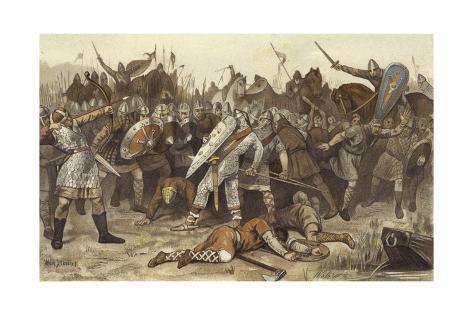LINK FOR SERVER INFORMATION

Lore of the Feudal Low Lands Server
The Holy Roman emperor Henry II sent an army towards western Frisia to subdue the rebellious Count Dirk III. However, the imperial army was defeated by the Vlaardingers and fled in panic.
In the early Middle Ages, Vlaardingen was part of the Holy Roman Empire. The north-western part of the empire, Lower Lotharingia, was ruled by Duke Godfrey of Verdun. Frisia, the most peripheral part of the duchy, fell under the office of Adalbold, bishop of Utrecht, and under Dirk III, to whom the coastal defence in the west had been delegated. Count Dirk III had his power base in Vlaardingen, along the banks of the Merwede, where it merged with the Maas River.
Emperor Henry II organised his expedition against the Frisians and their count for two reasons.
Firstly, the emperor wanted to clear the trade route between the port of Tiel and England: Dirk III forced the sailors who passed by on the Merwede to pay a heavy tribute, and thus he endangered commerce and the tax incomes of the emperor.
Secondly, the rebellious count had illegally occupied lands that were claimed by the bishop of Utrecht, and had even built a castle there. The bishoprics of Liege, Trier, and Cologne as well as several abbeys also had possessions in the region.
At Easter 1018, Emperor Henry II summoned a Diet in Nijmegen. He listened to the complaints of the merchants from Tiel and Bishop Adalbold II of Utrecht. Henry assigned Adelbold and Duke Godfrey to organise a punitive expedition against the rebellious Count Dirk.
Within a few months, an army would be assembled in Tiel, the most important port in the Low Countries. The army would sail west, along the rivers Waal and Merwede, to Dirk’s stronghold in Vlaardingen.
Three more bishops would supply troops: Balderic II of Liege, Gerhard of Cambrai and the Archbishop Heribert of Cologne. Bishop Balderic participated personally in the trip to Vlaardingen. Shortly beforehand, he had a new crypt constructed under the Basilica of Our Lady in Maastricht, which had collapsed on the day of his departure. This turned out to be a bad omen, because on the way downriver with the imperial fleet from Tiel to Vlaardingen the bishop fell ill. At Heerewaarden he left his ship and died on the very day of the battle.
The Battle of Vlaardingen
The fleet of the imperial army drifted down the river and moored at Vlaardingen. After disembarkation the army marched towards Count Dirk’s castle.

The locals, who had seen the fleet approaching, had withdrawn within the castle and "on higher grounds". Initially, Godfrey lined his men up around the castle, but then he ordered them to march towards a flat field, because it would be difficult to cross the ditches that were dug all over the place.
During this manoeuvre, the Frisians unexpectedly appeared from an ambush and attacked. Someone cried out that the duke had been killed, upon which panic broke out. The imperial warriors hurried back to their ships, which had been moved to the middle of the stream by now, because of the lowered tide. They sank away in the soggy river bank or they drowned. Meanwhile, the Frisians in the castle gestured and shouted to their countrymen on the higher areas to attack the survivors from the rear. The fleeing soldiers were finished off with javelins.

Only towards the end did Dirk III appear: he rode out of the castle, with a few retainers. They hurried towards Duke Godfrey, who was still alive and fighting, but had been cornered by the Frisians. Thanks to Dirk’s intervention the duke was not killed. Dirk captured Godfrey, and took him to his castle. This ended the battle.

The number of casualties suffered by the imperial army was enormous, while the losses on Dirk's side were minimal.
After the battle, the opponents hurried to make peace again. Duke Godfrey was released promptly, and he arranged a reconciliation between Bishop Adelbold and Count Dirk III. Both parties probably realised that the defence of the Frisian coast against possible Viking attacks was more important than the quarrels between themselves.
Nothing is known about the arrangements that the opposing parties made. It is likely that Dirk III had to make some concessions in order to obtain reconciliation, but concessions too were made on their part by the bishop and the emperor. One of which being, perhaps, that a promise was given to leave the count alone. In any event, no more armed conflicts have been recorded along the banks of the Merwede for three decades after the Battle of Vlaardingen.
The historical significance of the Battle of Vlaardingen
The Battle of Vlaardingen can be considered as the starting point for the independent county of Holland. In 1018, in Vlaardingen, Dirk III demonstrated that he would not be told what to do by any overlords.

Sources:
WikipediA
Special Battle of Vlaardingen website Most Historical research, recommended
Illustrations by John Rabou


